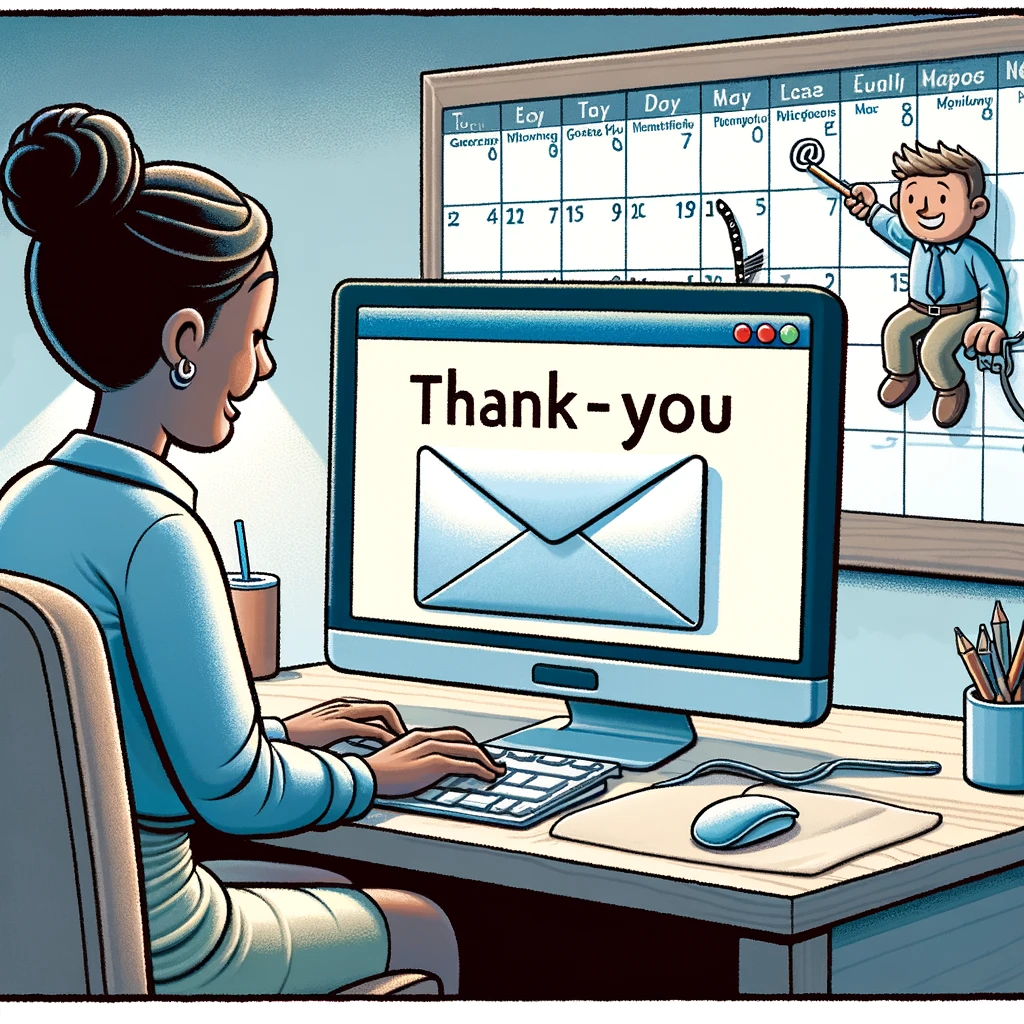Estimated reading time: 8 mins
What you do immediately AFTER a meeting could make the meeting even more worthwhile.
How many meetings do you leave and then get on with something else? The time immediately after a meeting is critical to making sure you get the most from it. Particularly if you took away actions from the meeting.

Meetings are a staple in the professional world, often serving as the engines of progress and collaboration. Yet, what truly determines the effectiveness of a meeting is not just what happens during the session but, crucially, what happens immediately after. The actions you take in the wake of a meeting can significantly amplify its value, transforming discussions into tangible results. Let’s explore five key steps to take right after a meeting to ensure it was time well-spent.
1. Diligent Documentation: The Art of Writing Minutes
The importance of meticulously writing and refining meeting minutes cannot be overstated. Immediately following a meeting, while the conversation and decisions are still vivid in your mind, is the most opportune time to review and finalize your notes. During the meeting, notes are often taken hastily to keep pace with the discussion, which can result in a cryptic or incomplete record. In the aftermath, when you revisit these notes, it’s crucial to translate any quick scribbles or shorthand into clear, comprehensive statements that accurately reflect what was discussed and decided.
This process of refining minutes is more than a clerical task; it’s an exercise in clarity and precision. It involves ensuring that the objectives, decisions, action items, and key discussion points are recorded in a manner that is easily understandable to everyone involved, including those who may not have attended the meeting. Properly documented minutes serve as an official record of the meeting and are instrumental in tracking progress, responsibilities, and timelines. They are a source of truth that can be referred back to for clarification and guidance, preventing miscommunications and misunderstandings that can derail project timelines and outcomes.
By dedicating time to carefully review and polish your meeting minutes immediately after the session, you lay the groundwork for effective follow-up and accountability, ensuring that the meeting’s outcomes are clearly understood and actionable. This diligence not only enhances the productivity of the meeting itself but also reinforces your role as a meticulous and responsible professional.
2. Action Items: Ensuring Feasibility and Clarity
Post-meeting, a critical step is to scrutinize and refine the action items you’re responsible for. This step goes beyond merely noting down tasks; it’s about delving into the practicalities of implementation. Immediately after the meeting, while details are fresh, evaluate each action item for potential obstacles. Are there dependencies, resource constraints, or prior approvals needed? Identifying these early on allows you to strategize and initiate any necessary steps to mitigate delays.


This phase is also about ensuring that your tasks are clear and achievable. Break down each action into smaller, manageable steps if necessary. This breakdown not only makes the task seem less daunting but also provides a clear roadmap for completion. Setting immediate, short-term goals for each action can help maintain momentum and focus.
Additionally, consider the actions assigned to others. If you possess relevant insights or foresee potential challenges in their tasks, think about how you can offer support or resources. Perhaps there’s overlapping between your tasks and theirs which could be synergized. By proactively considering these aspects, you contribute to a collaborative environment where everyone is equipped to succeed.
In essence, ensuring that your action items are actionable is about foresight and preparation. It involves a thoughtful analysis of what needs to be done, a realistic assessment of how it can be achieved, and a collaborative mindset to support the collective success of the team. By dedicating time to this immediately after a meeting, you set the stage for effective execution and contribute to the overall efficiency and productivity of the team.
3. Communication Cascade: Promptly Informing Stakeholders
The immediate period following a meeting presents a crucial window for cascading information to relevant stakeholders, especially those who were not present in the meeting. This step is more than just a routine dissemination of information; it’s about ensuring that the decisions and discussions are accurately and effectively communicated to all those affected.
Prompt communication ensures that the information is relayed while it’s still fresh and clear in your mind, reducing the risk of missing out on critical details or misinterpreting the discussions. This can be particularly important in fast-paced environments where decisions need to be acted upon quickly. By providing timely updates, you help maintain the momentum generated in the meeting and facilitate swift action on the agreed-upon points.
Choosing the right mode of communication is key. While emails can serve as an official record and are useful for detailed or complex information, verbal communication can be more effective for immediate, brief updates or for ensuring that the message is understood correctly. A quick team huddle or one-on-one conversations can also provide a platform for colleagues to ask questions or seek clarifications, fostering a two-way communication channel.
Moreover, this proactive sharing of information underscores a sense of inclusivity and respect for your colleagues. It demonstrates your commitment to keeping the team aligned and informed, which is fundamental in building a cohesive and collaborative work environment. By taking the initiative to communicate effectively after meetings, you not only ensure that everyone is on the same page but also contribute to building a culture of openness and proactive engagement in your workplace.
4. Follow-Up: The Power of Prompt Acknowledgement
Effective follow-up in the immediate aftermath of a meeting is a crucial step that often goes underrated. It begins with a simple yet powerful act – expressing gratitude to the participants. This isn’t just about good manners; it’s an acknowledgment of their time and contributions, which can go a long way in fostering positive relationships and encouraging future collaboration.


But the follow-up extends beyond mere thanks. This is the opportune moment to reiterate the critical actions agreed upon during the meeting. Reminding participants of their commitments ensures that these tasks remain a priority and don’t get lost in the shuffle of daily activities. It’s a subtle nudge that keeps the momentum going and emphasizes the importance of the meeting’s outcomes.
Furthermore, if there’s a need for subsequent meetings, scheduling them immediately can be highly effective. This proactive approach helps in securing a slot in everyone’s busy calendars and maintains the continuity of the project or discussion. It also gives participants a clear view of the timeline and what’s expected of them moving forward.
This phase of follow-up is not just administrative but strategic. It’s about reinforcing the objectives of the meeting, keeping everyone engaged, and setting the stage for the next steps. By taking these actions promptly, you demonstrate your commitment to the project’s success and your efficiency as an organizer. This diligent follow-up is integral in transforming meeting discussions into tangible results, ensuring that the time spent in meetings is productive and impactful.
5. Reflective Review: Learning for Future Success
The process of reflection after a meeting is an essential yet often neglected step. This reflective review isn’t just a cursory glance over what happened; it’s a deep dive into the dynamics of the meeting, analyzing what elements worked well and which didn’t, and understanding why. This introspection is key to continuous improvement in how meetings are conducted and managed.


Start by considering the structure and flow of the meeting. Was the agenda followed effectively? Were all key points discussed thoroughly? Reflect on the participation – did everyone who needed to contribute have the opportunity to do so? Were there any voices that were overshadowed or points that weren’t given enough attention? Also, evaluate the time management aspect – did the meeting start and end on time, and were all topics covered within the allotted time frame?
Next, think about the outcomes of the meeting. Were the objectives met? Did the meeting result in clear action items and decisions? Understanding these aspects can provide valuable insights into the meeting’s effectiveness and the productivity of the group.
Sharing these reflections with your team or colleagues can be incredibly beneficial. It opens up a dialogue for collective learning and improvement. Discussing what worked and what didn’t, in a constructive manner, can lead to the implementation of new strategies or adjustments in future meetings. This could include changes in meeting format, participant engagement techniques, or even the way action items are assigned and followed up.
In essence, this reflective review is about turning experiences into learning opportunities. By taking the time to critically assess each meeting, you not only enhance your skills as a facilitator but also contribute to a culture of continuous improvement and effective collaboration within your team. This process turns ordinary meetings into valuable learning experiences, paving the way for more successful and productive meetings in the future.
Conclusion
The true measure of a meeting’s success lies in what happens afterwards. By promptly and effectively handling post-meeting tasks like refining minutes, assessing action items, sharing information, following up, and reflecting on the meeting’s process, you ensure that the time spent in meetings translates into concrete actions and continuous improvement. These steps not only maximize the impact of the meeting but also enhance your role as a collaborative and proactive professional. Remember, the most productive meetings are those whose effects are felt long after the participants have left the room.
